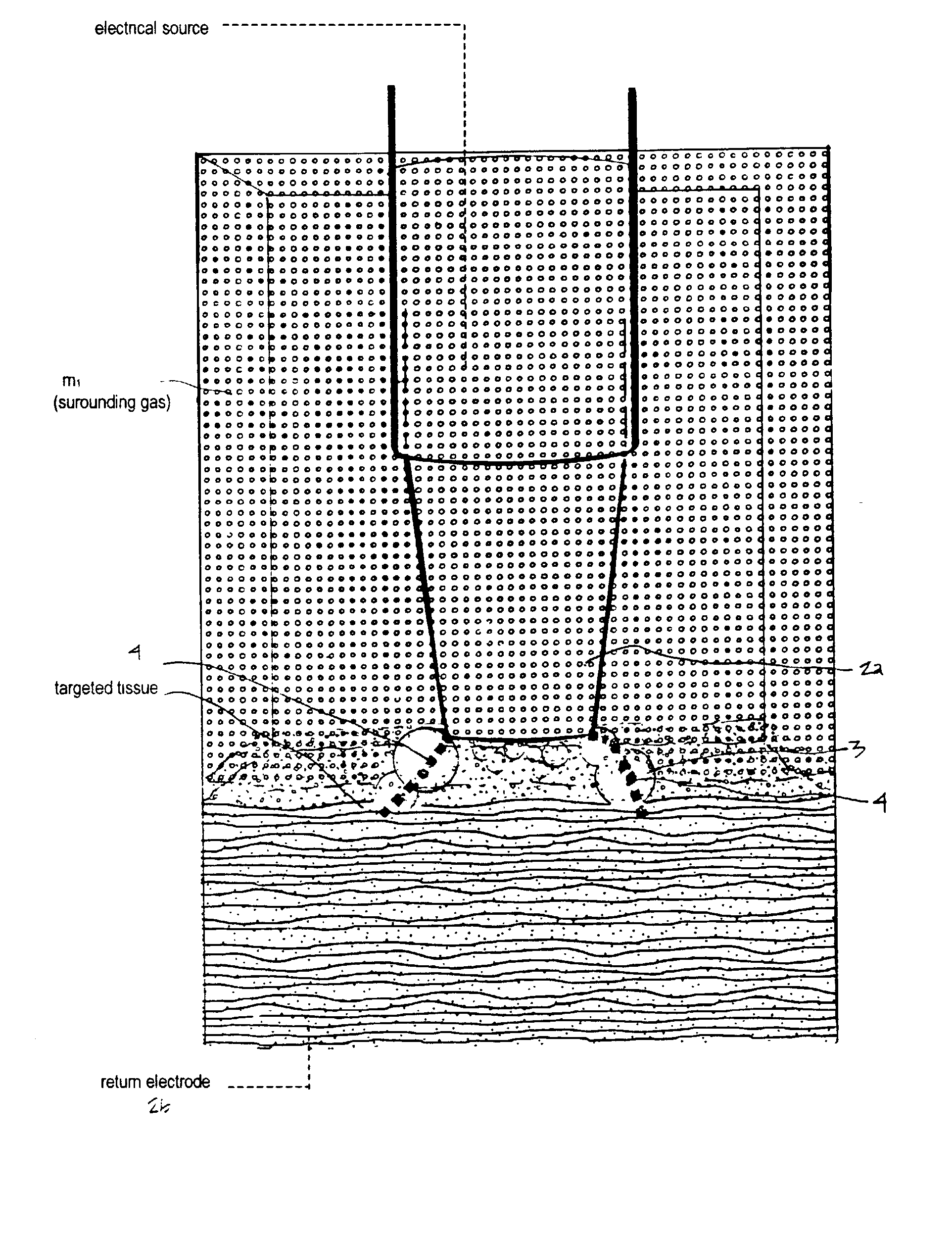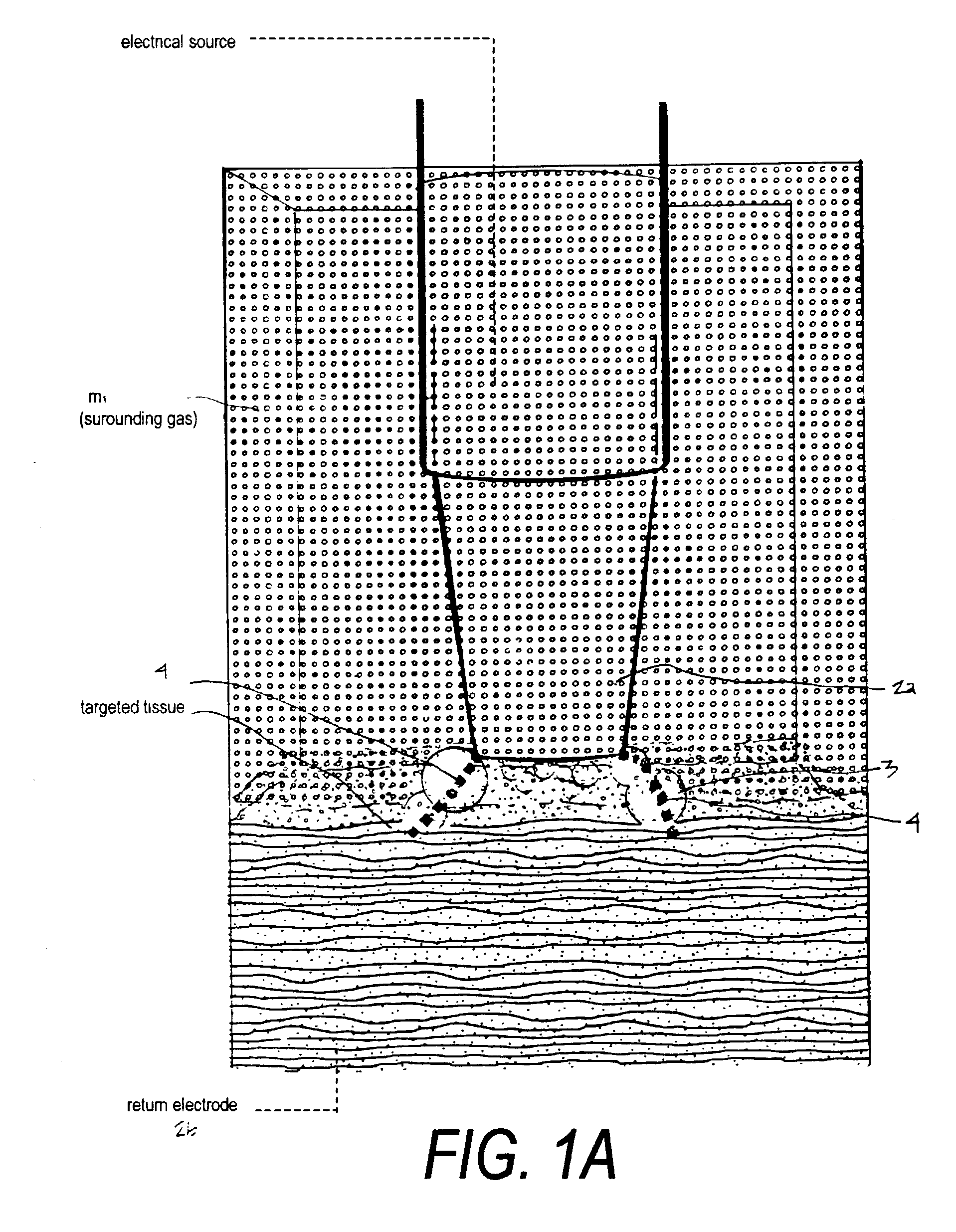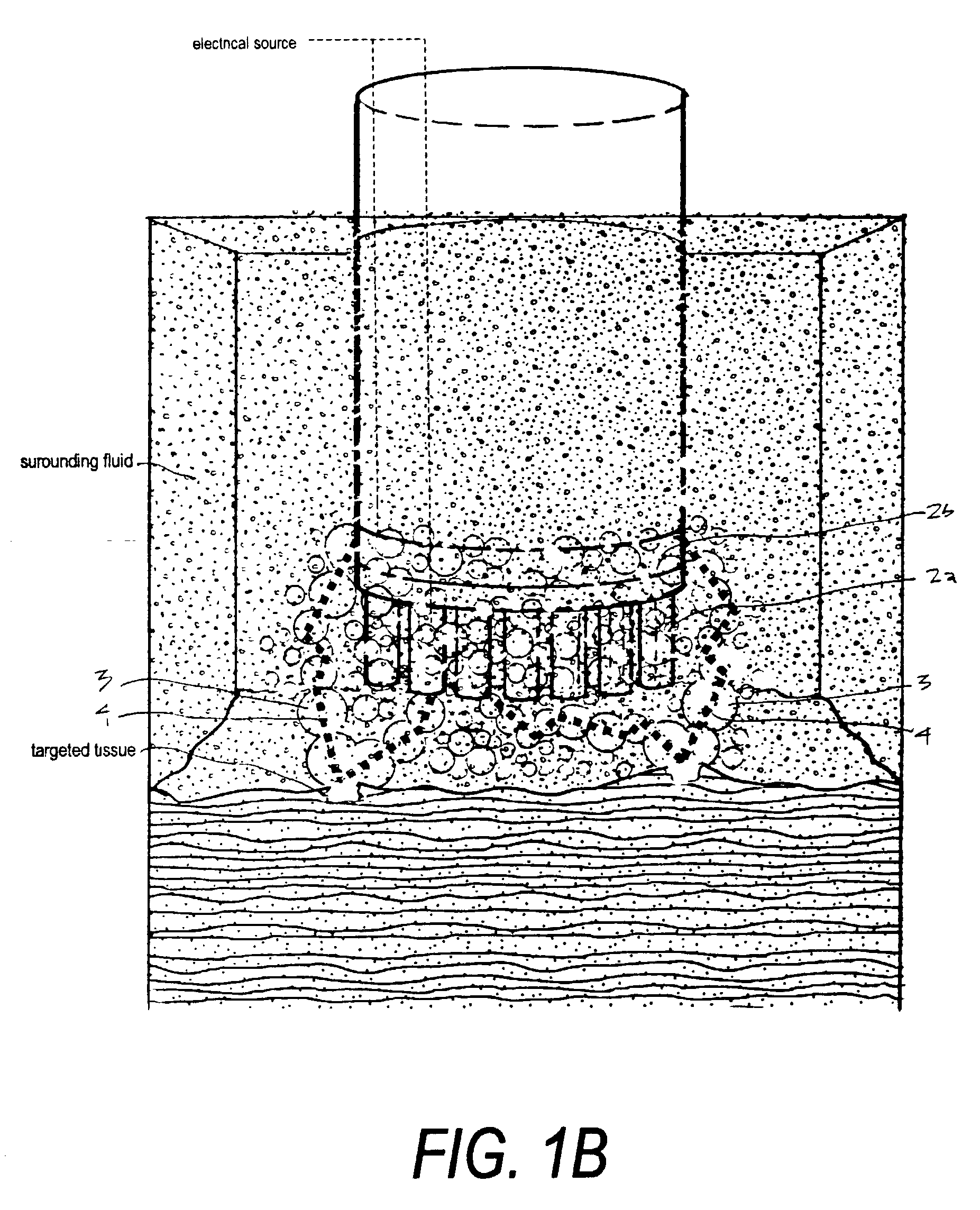Electrical discharge devices and techniques for medical procedures
a technology of electric discharge device and medical procedure, applied in the field of electrosurgical instruments, can solve the problems of significant collateral damage to tissue volumes adjacent to the targeted site, explosion of water to damage or destroy tissue, and inefficient volumetric tissue removal without extensive collateral damage, and achieve the effect of enhancing an electron avalanche in plasma
- Summary
- Abstract
- Description
- Claims
- Application Information
AI Technical Summary
Benefits of technology
Problems solved by technology
Method used
Image
Examples
embodiment 205
[0122] In a previous part of this disclosure (see "Summary and Objects of the Invention"), a number of processes were described to cause, induce or develop ionization of a captured neutral gas volume (or bubble), and thereafter terminate ionization of the gas, in an interface between a probe working end and a targeted site ts. Such an instantaneously and independently ionized gas volume can then cause an intense application or arc of electrical energy from an electrode to the targeted site ts across the gas volume to volumetrically remove surface layers of an anatomic structure. Several ionization processes were described above, viz., photoionization (PI), field ionization (FI), thermal ionization (TI) and the ionization of surface analytes from a solid material. In this Type "C" embodiment 205, the use of independent field ionization (FI) means is described as an option in Section V(C) below and at times referred to as the first energy source. In addition, a working end carrying a ...
embodiment 400
[0152] FIGS. 22A-22B below illustrate a Type "E" embodiment 400 that provides an additional energy delivery mode that has been found to optimize the formation, character and dimension of gas bubbles in the interface between the working surface 415 and the targeted tissue.
[0153] More in particular, it has been found the application of vibrational energy to, and about, the working surface can increase the efficiency of the electrical energy application across the transient gas volume or bubbles that are formed between the working surface and the targeted tissue. In one embodiment, referring to FIG. 22, the instrument body 410 extends to a working surface 415 that, for convenience shows a single media entrance channel 422 but a plurality of microchannel entrance ports are more practical for a typical dimension working end as shown in FIGS. 12, 13, 19C, 19C and 20. A remote source of a selected gas as described previously is operatively coupled to the instrument to provide flow through ...
PUM
 Login to View More
Login to View More Abstract
Description
Claims
Application Information
 Login to View More
Login to View More - R&D
- Intellectual Property
- Life Sciences
- Materials
- Tech Scout
- Unparalleled Data Quality
- Higher Quality Content
- 60% Fewer Hallucinations
Browse by: Latest US Patents, China's latest patents, Technical Efficacy Thesaurus, Application Domain, Technology Topic, Popular Technical Reports.
© 2025 PatSnap. All rights reserved.Legal|Privacy policy|Modern Slavery Act Transparency Statement|Sitemap|About US| Contact US: help@patsnap.com



